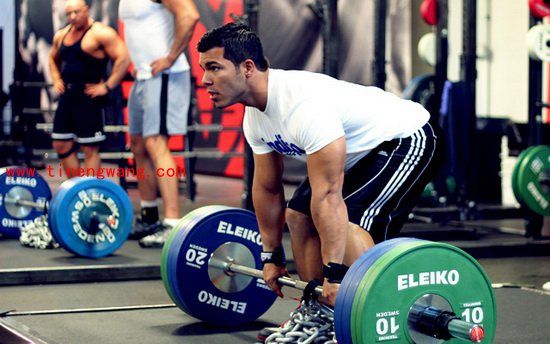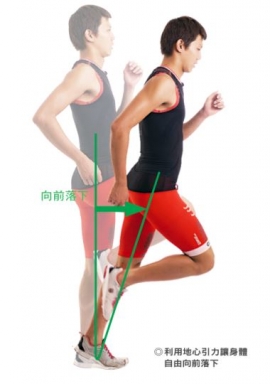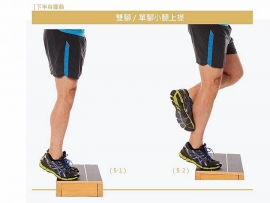以下有一段硬举的呼吸介绍:
而畅销书Starting Strength作者Mark Rippetoe则有不同的看法,下方影片6分05秒开始。他建议的方式是先在动作进行前深吸一口气,直到您完成一次动作后才进行吐气,也就是槓接触到地板才吐气,动作全程是闭气的。
而“深吸口气”要吸饱吗?在BodyBuilding文章”Know When To Hold It: How To Breathe While Lifting”有提到一项研究结果:
To maximize intra-abdominal pressure during strength training, you should breathe deeply—approximately 75 percent of maximum—into your belly and hold that breath if possible throughout a repetition, exhaling only when you complete the rep. This provides optimal support for the spine, and it makes you stronger structurally.
译:为了在肌力训练的过程中最大化腹内压,应该进行深层的吸气-“约75%(非吸饱)”-把空气吸至腹部,可能的话,在一次动作反覆过程中闭气,当您完成一次动作反覆后才吐气。对于嵴椎来说,这提供最理想的支撑,同时让您的身体结构更为强壮。
而研究下背疼痛的权威专家 Stuart McGill则建议动作过程中持续地进行自然呼吸,这有助于身体在任何情况下维持持续的腹部肌肉启动及确保嵴椎稳定,在”Enhancing Low Back Health through stabilization exercise”有说明:
Some people recommend that during training, one should exhale upon exertion (when weight training for example, exhaling upon the lifting phase and inhaling on the lowering). In terms of grooving stabilizing motor patterns for all tasks, this is a mistake.
In other words, breathing in and out should occur continuously, and not be trained to a specific exertion effort – this helps to maintain constant abdominal muscle activation and ensure spine stability during all possible situations (of course the opposite is true for maximal effort competitive lifting where a valsalva manoeuvre”努责效应” with the breathe held is necessary – but performance training is not the emphasis here).
Further, specific muscle activation patterns are essential to avoid injury but have also been documented to become perturbed following injury. Pain is a powerful instigator in the deprogramming of normal/healthy motor patterns into perturbed patterns. The exercises and programs described here are based on the latest scientific knowledge of how the spine works, and becomes injured. In addition, they have been quantified for spine load, resultant spine stability, and muscle oxygenation, to name a few. These are only a few examples to begin a program.
The goals are to enhance spine stability through grooving motion and muscle activation patterns to prepare for all types of challenges. Of course, other exercises may be required subsequently to enhance daily functioning, but once again, these will depend upon the characteristics and objectives of the individual.
另外一种建议是:“施力时吐气,而在力量需求较低的过程进行吸气。”
我想没有所谓标准的呼吸方式,也没有所谓一种呼吸方式适合所有族群与需求(初学、中阶、进阶者、轻负荷、高负荷等),可以适自己的状况来选择;关键还是在于确保嵴椎获得良好的支撑稳定。




